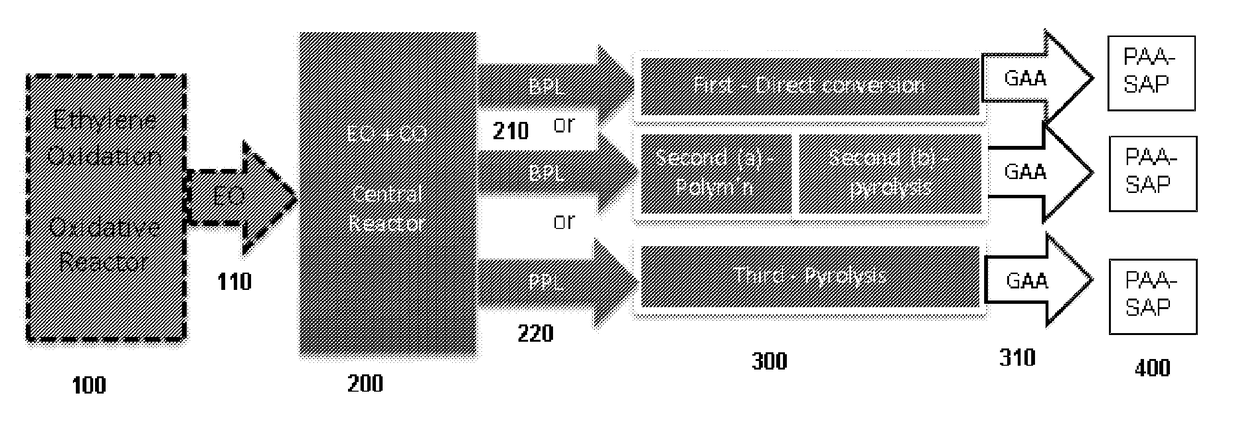Systems and processes for polyacrylic acid production
a technology of polyacrylic acid and production process, applied in the preparation of carboxylic compounds, carbon monoxide reaction carboxylic preparations, organic chemistry, etc., can solve the problems of ppl pyrolysis, insufficient purity of acrylic acid, and methods that require expensive and energy-intensive purification of acrylic acid, etc., to achieve excellent purity and efficient preparation of paa
- Summary
- Abstract
- Description
- Claims
- Application Information
AI Technical Summary
Benefits of technology
Problems solved by technology
Method used
Image
Examples
Embodiment Construction
[0103]Described herein are systems and methods for producing polyacrylic acid (PAA) from ethylene, rather than propylene, that eliminate products and byproducts of propylene oxidation. Also, because the disclosed systems and methods are conducted with a single integrated system, highly reactive intermediates, including ethylene oxide (EO), beta propiolactone (BPL), and acrylic acid are swiftly carried through to the relatively stable polyacrylic acid (PAA). The disclosed systems and methods can be used to prepare PAA and SAPs of excellent (e.g., high) purity.
Systems
[0104]Provided herein are systems for producing PAA and / or SAP from ethylene within an integrated system. In one aspect, a system is provided for the production of polyacrylic acid (PAA) from ethylene, within an integrated system, comprising:
[0105]an oxidative reactor, comprising an inlet fed by ethylene, an oxidative reaction zone that converts at least some of the ethylene to ethylene oxide (EO), and an outlet which pro...
PUM
 Login to View More
Login to View More Abstract
Description
Claims
Application Information
 Login to View More
Login to View More - R&D
- Intellectual Property
- Life Sciences
- Materials
- Tech Scout
- Unparalleled Data Quality
- Higher Quality Content
- 60% Fewer Hallucinations
Browse by: Latest US Patents, China's latest patents, Technical Efficacy Thesaurus, Application Domain, Technology Topic, Popular Technical Reports.
© 2025 PatSnap. All rights reserved.Legal|Privacy policy|Modern Slavery Act Transparency Statement|Sitemap|About US| Contact US: help@patsnap.com



